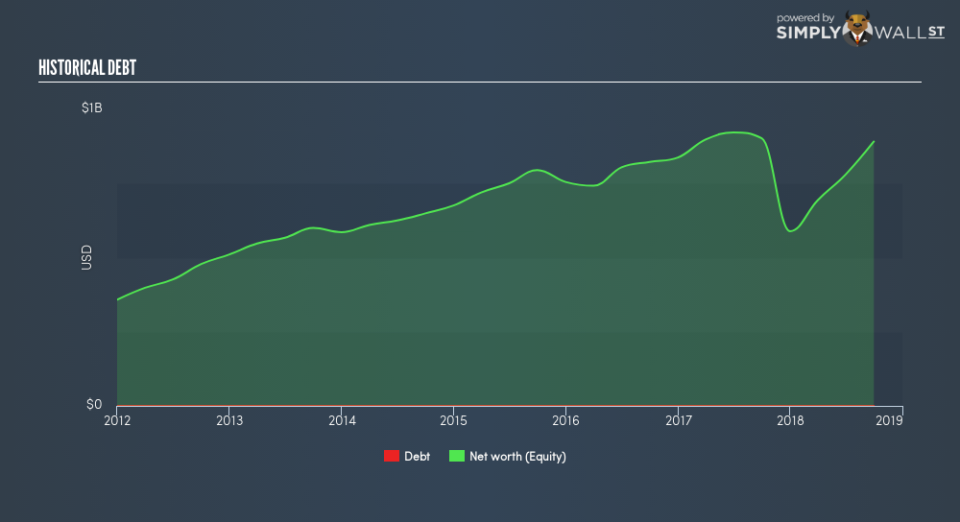Is Fortinet Inc (NASDAQ:FTNT) As Strong As Its Balance Sheet Indicates?

With a market capitalization of US$13b, Fortinet Inc (NASDAQ:FTNT) is a large-cap stock, which is considered by most investors as a safe bet. Common characteristics for these big stocks are their strong balance sheet and high market liquidity, which means there’s plenty of stocks available to the public for trading. These companies are resilient in times of low liquidity and are not as strongly impacted by interest rate hikes as companies with lots of debt. Today I will analyse the latest financial data for FTNT to determine is solvency and liquidity and whether the stock is a sound investment.
View our latest analysis for Fortinet
Can FTNT service its debt comfortably?
What is considered a high debt-to-equity ratio differs depending on the industry, because some industries tend to utilize more debt financing than others. Generally, large-cap stocks are considered financially healthy if its ratio is below 40%. The good news for investors is that Fortinet has no debt. This means it has been running its business utilising funding from only its equity capital, which is rather impressive. Investors’ risk associated with debt is virtually non-existent with FTNT, and the company has plenty of headroom and ability to raise debt should it need to in the future.
Does FTNT’s liquid assets cover its short-term commitments?
Given zero long-term debt on its balance sheet, Fortinet has no solvency issues, which is used to describe the company’s ability to meet its long-term obligations. But another important aspect of financial health is liquidity: the company’s ability to meet short-term obligations, including payments to suppliers and employees. Looking at FTNT’s US$1.1b in current liabilities, it seems that the business has maintained a safe level of current assets to meet its obligations, with the current ratio last standing at 1.87x. Generally, for Software companies, this is a reasonable ratio as there’s enough of a cash buffer without holding too much capital in low return investments.
Next Steps:
FTNT has zero debt in addition to ample cash to cover its near-term liabilities. Its strong balance sheet reduces risk for the company and its investors. I admit this is a fairly basic analysis for FTNT’s financial health. Other important fundamentals need to be considered alongside. I suggest you continue to research Fortinet to get a more holistic view of the stock by looking at:
Future Outlook: What are well-informed industry analysts predicting for FTNT’s future growth? Take a look at our free research report of analyst consensus for FTNT’s outlook.
Valuation: What is FTNT worth today? Is the stock undervalued, even when its growth outlook is factored into its intrinsic value? The intrinsic value infographic in our free research report helps visualize whether FTNT is currently mispriced by the market.
Other High-Performing Stocks: Are there other stocks that provide better prospects with proven track records? Explore our free list of these great stocks here.
To help readers see past the short term volatility of the financial market, we aim to bring you a long-term focused research analysis purely driven by fundamental data. Note that our analysis does not factor in the latest price-sensitive company announcements.
The author is an independent contributor and at the time of publication had no position in the stocks mentioned. For errors that warrant correction please contact the editor at editorial-team@simplywallst.com.

 Yahoo Finance
Yahoo Finance 